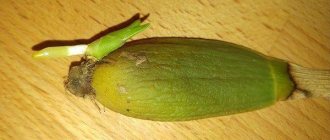The popular flower is a greenhouse flower and requires special care . Therefore, home gardeners need to treat their overseas guest with trepidation and know the subtleties of care so that the delicate flower will delight with a variety of colors. But what should you do if, some time after the housewarming, the orchid flowers on the windowsill begin to wither, dry out and fall off?
Why do the buds dry out? The main reasons: possible stress, a flower pot, poor lighting or, on the contrary, excess sunlight, hypothermia or overheating, drafts in the room, improper watering of the plant. The situations are different, but the algorithm for saving the ornamental beauty is the same: an ambulance is needed, otherwise the orchid will die.
Hypothermia
Hypothermia is a common cause of inflorescences falling off. If you purchased an orchid in a store in winter and take the plant home, remember:
Transportation in winter causes hypothermia. First aid: pack the plant in cellophane and paper. The packaged delicate orchid tolerates frost for no more than 15 minutes.
Causes hypothermia and drafts when ventilated . It would seem that resuscitation of the plant is simple: eliminate ventilation. But the difficulty of such a step lies in the fact that the tropical guest does not tolerate stuffiness well and cannot do without proper ventilation.
Important! The orchid needs ventilation. But it is unacceptable to leave the flower in a draft. In summer, take the orchid outside or onto the balcony.
Summer air baths are useful , but remember that cold nights will destroy the capricious heat-loving flower. But what to do if preventive measures did not help and the leaves fell? Recommendations step by step:
- Wilted flowers should be removed;
- move the plant to a warmer place;
- eliminate drafts, install gentle ventilation;
- Leave the plant alone; it does not need replanting.
Why do the buds wither?
An orchid's buds may wilt if the plant itself is stressed or exposed to adverse environmental factors.
Most often, the reason for the wilting of buds is
a sudden change in the conditions in which the flower was previously kept.
If the buds of a newly acquired flower have withered, then this is not surprising. Because in a short time the plant has changed at least several habitats.
In the greenhouse, all the necessary conditions were created for the orchid, but this cannot be repeated in your own apartment.
Lack of lighting, temperature changes and dry air provoke wilting of the buds. Hypothermia of the substrate and the plant itself also leads to the withering of the buds, after which they fall off. For an orchid, the critical ambient temperature is + 15C .
Spraying: benefit or harm?
The orchid is sprayed daily, but keep a few nuances in mind. If the air in your apartment is dry, use a humidifier. To prevent the flowers from drying out, bathe the orchid in the shower once a month, and after water treatments, wipe the leaves dry. For spraying to be beneficial, follow the rules :
- The water temperature for spraying is two degrees higher than indoors.
- If the room temperature is below 20 degrees, spray less frequently or eliminate water procedures.
- Spray in the morning.
- Do not spray the flower in direct sunlight under any circumstances, otherwise a burn will occur!
- It is not advisable to spray flowers to avoid stains on them and premature falling off.
If prevention did not help and the flowers began to fall off:
- Reduce the number of sprays.
- Remove faded inflorescences.
- Normalize the light mode.
- Ensure proper watering.
We invite you to watch an informative video about spraying an orchid:
How to dilute a succinic acid tablet for an orchid?
Succinic acid is a unique fertilizer for orchids. Thanks to it, the flower copes with stress more intensively, enjoys longer flowering, grows and recovers faster, and receives the necessary saturation.
The correct dosage is the key to success. If the drug is used in tablets, the application regimen is as follows: one tablet is completely dissolved in 200 ml of water. The next step is to add another 800 ml of water to the resulting concentrate.
Orchid rhizomes should be soaked in the resulting solution for 20-30 minutes. It’s easy enough to spray the leaves; the main thing is to prevent the solution from penetrating into the leaf rosette. To do this, it is best to plug it with a piece of cotton wool or cotton cloth.
Humidity: optimal value
Lack of moisture or its excess is the most common cause of problems . An acute lack of moisture occurs if watering is stopped for some reason. In this case, resuscitation cannot be avoided!
Instructions for this case:
- Pour water at room temperature into the basin to a level of no more than 15-20 cm.
- Immerse in a basin of water and wait until the earthen lump becomes limp.
- Please note that the leaves must be dry when immersed in the basin!
- If the earthen ball is too limp, it is necessary to place the patient in a new pot.
Keeping it too wet creates another serious problem: the phalaenopsis begins to rot. Affected by rot, the flower loses its foliage, the leaves become soft, and the flowers fall off.
Rotting is always easier to prevent than to treat. If 90% of the plant is infected, it will die!
It is important to take timely measures and eliminate the causes of rot:
Remove the flower from the pot.- Rinse the roots under warm running water.
- Remove damaged roots and leaves.
- Remove wilted flowers.
- Treat the sections with an antiseptic.
- Leave to dry overnight.
- Replant the orchid in new soil with a drainage layer.
- Water only after the soil has dried.
Antiseptics for orchids: Fundazol, Fitosporin . Treatment of wounds against rot: Chlorhexidine. After reading such detailed instructions, the question remains: how to properly water an orchid?
Sensitive plant
This plant responds quite negatively to stress. For example, when moving, a flower may be “scared” even by a five-minute stay in cool air while it is being moved from the store to the car. Arriving home, she can be freed from several buds or flowers on the same day.
It is so sensitive that at the beginning of flowering, it is impossible to even move the orchid pot from one place on the windowsill to another - it is generally impossible to touch or move it. Stressful release of buds is not risky: having recovered, the plant lives and continues to bloom.
Proper watering
“It’s also science for me to water flowers from a watering can!” - the novice florist will exclaim. But experienced plant growers know that watering is an art. The quality of water, composition and temperature determine the well-being of the orchid. Tap water is not suitable due to the presence of heavy metals.
To water orchids, use soft, purified water.
The accepted practice of settling water for watering plants is not suitable in the case of a strange pet . To purify the liquid, use a filter, a distiller, boil and cool.
If it is not possible to boil or filter, acidification will help reduce the concentration of unnecessary calcium impurities. Apply oxalic acid following the instructions on the drug.
A competent schedule for watering orchids helps to avoid problems with waterlogging and drying out of the earthen clod. Note that the schedule depends on the time of year, temperature and humidity in the room and the life cycle of the plant.
During the active growing season, water the plants 2-3 times a week . During flowering, watering is increased. The principle of watering is simple: make sure that the soil substrate does not dry out or become waterlogged. In winter, watering is reduced, but spraying is not stopped.
How to water:
- using a watering can;
- immersion in the pelvis;
- shower;
- copious spraying.
How much water is needed for irrigation? Water until moisture begins to seep out of the holes in the bottom of the planter . The best time to water is early morning. Remember that proper watering will help avoid difficulties caused by waterlogging and drying out.
We offer a video about proper watering of an orchid:
Common Causes
The most common type of flower is considered to be phalaenopsis.
All the reasons why buds fall off (sometimes even unopened ones) are the same for all types of flowers.
The main reasons why phalaenopsis buds fall off:
- proximity to unwanted fruits or plants;
- change of temperature, humidity, lighting;
- incorrect watering;
- feeding with fertilizers during flowering;
- stressful situation (transfer, moving);
- natural old age.
Some reasons why an orchid bud withers cannot be solved. Some require analysis and adjustment.
Sunstroke: first aid
Orchids are heat-loving, because they come from the tropics. This fact cannot be ignored, but a big mistake is to leave the flower in direct sunlight , near a heating radiator, or place it under a stream of scorching air from an air conditioner. A couple of hours of such sunny and warm baths are enough to cause trouble! The distress signal will come immediately: the flowers will fall, the leaves will shrivel!
What to do:
- Move the orchid away from the source of the problem.
- Water after 2 hours.
- After another hour, spray the plant.
- Follow the correct watering schedule.
Let there be light! Orchids need a lot of indirect light. With a lack of light, the leaves stretch out, become dull, and the flowers die.
Normal daylight hours average 12 hours. Young specimens require 16-18 hours of daylight. If there is too little light, simple devices will help: fluorescent lamps
Fluorescent lamps are suitable for additional lighting . The minimum distance from the leaves is 5-7 cm! If there are too many lamps, beware of overheating and sudden temperature changes when turning on and off.
Ethylene and its effect on flowering
You can imagine the following picture: autumn, on the bedside table not far from the window there is a blooming beauty, next to it is a vase of fruit. Beautiful? But such beauty will not last long , as the orchid will begin to dry out the flowers and buds. Why?
Flowering plants should not be placed near :
- Apples;
- Grush;
- Bananas;
- And other vegetables and fruits.
Orchids should not be grown near fruit.
Since the latter emit ethylene. Ethylene is a gas that is produced in some plants and fruits under the influence of the amino acid methionine.
Physiologists believe that ethylene is a plant aging hormone. To prevent fruits from spoiling quickly, varieties are developed in which ethylene synthesis is impaired. And then it is used for faster ripening of fruits.
Also, orchids should not be placed close to cut flowers, such as :
- Dahlias;
- Irises;
- Carnations;
- Chrysanthemums;
- Gladioli;
- Roses;
- Asters.
Plants such as :
- Begonias;
- Fuchsia;
- Primrose;
- Geranium;
- Or pine needles.
The orchid dries out the buds when in contact with the above listed plants, fruits and vegetables.
Prevention is the key to success
It’s impossible not to love a fragile flower with a special charm. Anyone who has ever seen him is in love forever. So that the patient does not need ambulance, here are some final recommendations:
- The optimal temperature in summer is up to 25 degrees Celsius, in winter not lower than 16.
- Avoid temperature changes; the permissible difference without consequences is 5-6 degrees.
- The duration of daylight hours is from 12 hours.
- Choose a pot according to size.
- Air humidity – 55-65%.
- Ventilate the room, but avoid drafts.
- Replant every 2-3 years.
- Water 2-3 times a week, depending on the time of year and the plant's cycle.
- Spray sparingly, avoiding the procedure in direct sunlight.
- Shower - no more than once a month.
A drying orchid is a dangerous problem. Not only the flowers of a plant can dry out, but also the leaves, roots and stem.
In what cases will you have to accept the loss of flowers?
Root death
If the root system dies , if possible, then it is the roots that need to be revived. You should forget about flower stalks during this period.
Natural aging
You should not demand good flowering from a flower that has aged biologically and naturally .
There is nothing you can do about nature, the plant no longer has the strength to reproduce, you have to come to terms with it.
Changing the conditions of detention
Another reason not to wait for flowering, since orchids do not like changes in conditions .
Due to harsh climatic conditions, the orchid may die.
In addition, usually after purchase the orchid is also replanted.
It takes time to adapt.
Severe hypothermia
Transportation during the cold season, drafts or inaccurate ventilation guarantees the release of buds and flowers and stops the formation of flower stalks.
And in case of severe hypothermia, it is generally necessary to save the plant itself , forgetting about the flowers.
Signs of natural wilting
Orchid inflorescences do not always turn yellow and fall off due to an unsuitable microclimate.
Indoor plants aged 6 years and older experience gradual and uniform wilting, starting from the bottom tier - this is the first sign of the natural growing season caused by aging.
It ends with subsequent yellowing and drying of the peduncle, which is cut off to allow new shoots to develop.
At the end of the budding stage, accompanied by the fall of the corollas, the orchid is supported by classical care, creating all the conditions for the onset of the next flowering phase.
Sometimes premature drying is associated with accidental pollination by insects that have entered the room.
The forced shedding of buds appears en masse, while the flower crop loses the decorativeness and brightness of the leaves.
When to replant
Replant plants in the dormant stage
To save an orchid, it must be replanted (not done at the budding stage).
Pre-rotten roots are cut off, and the surviving areas are treated with a weak pink solution of potassium permanganate, the potting container is disinfected before filling the soil.
After the procedure, the flower is not watered for 1.5 weeks.
When transplanting, some gardeners encounter a dry whitish coating on the roots. This is a sign of alkalization of the soil, which also causes the dropping of buds and lack of flowering.











